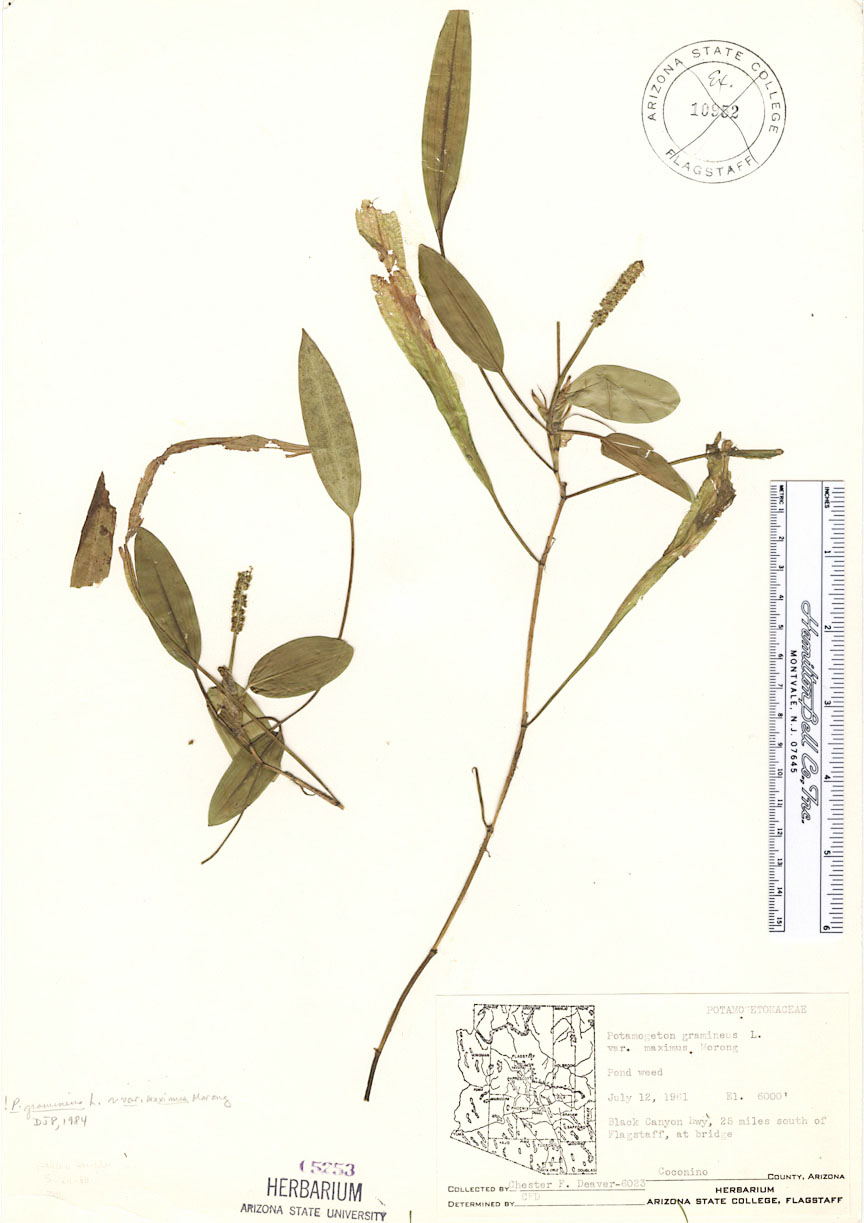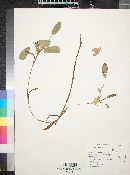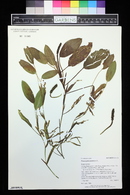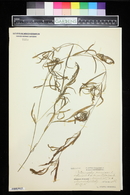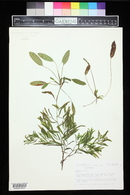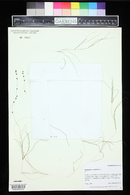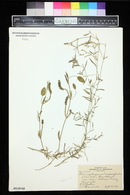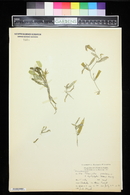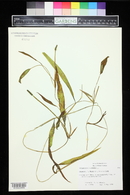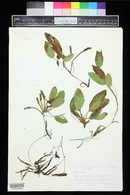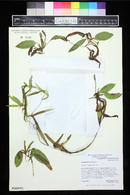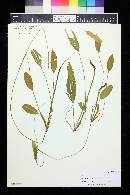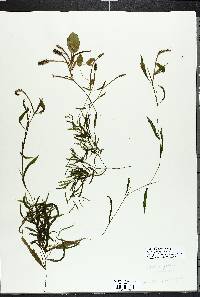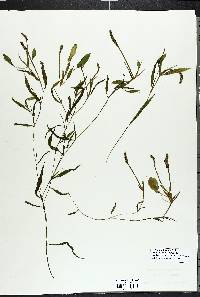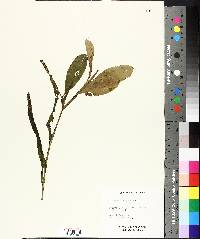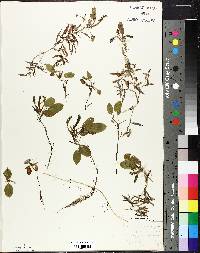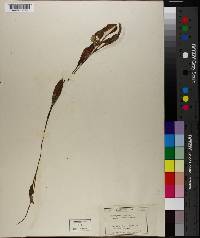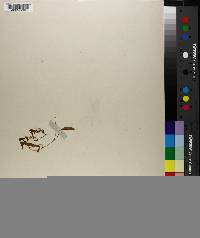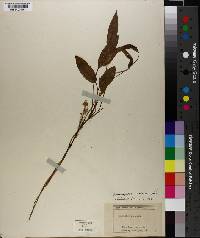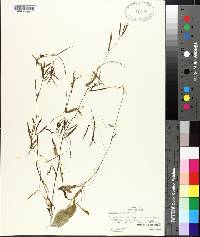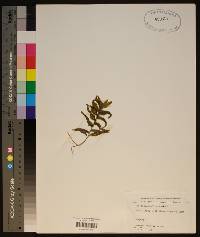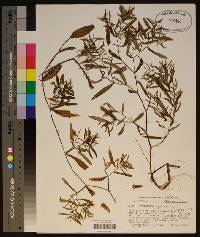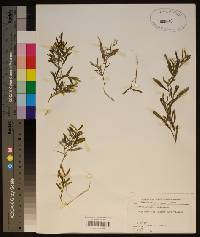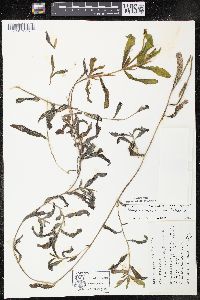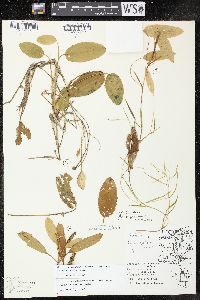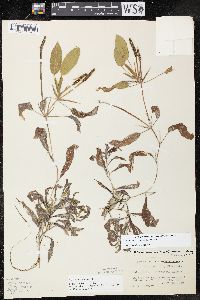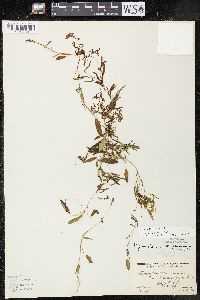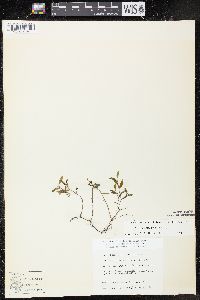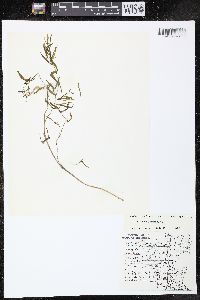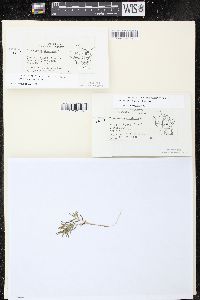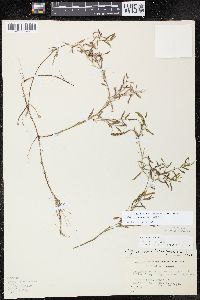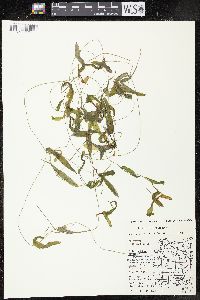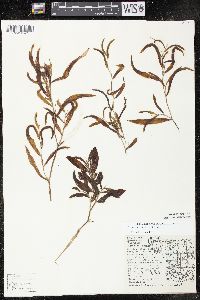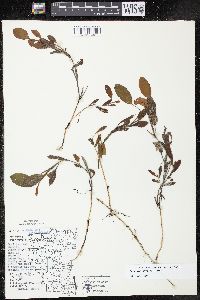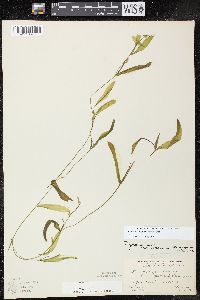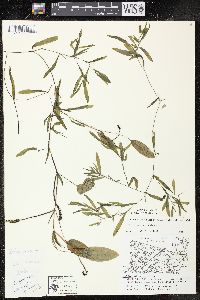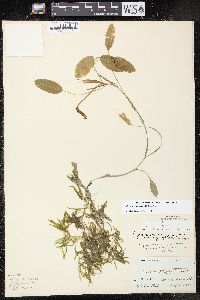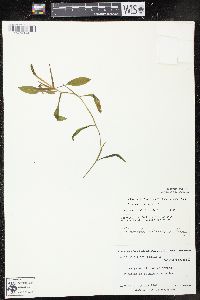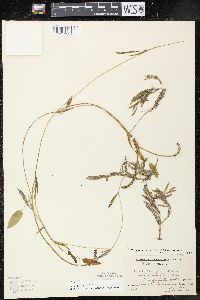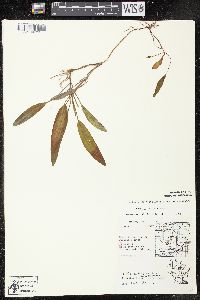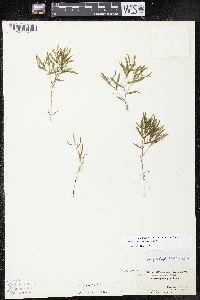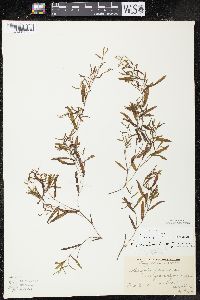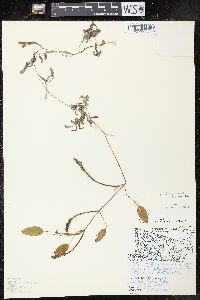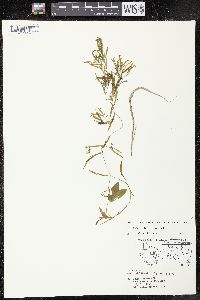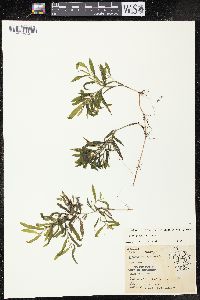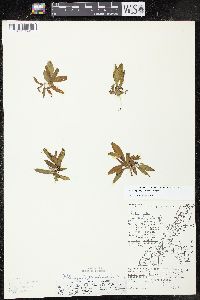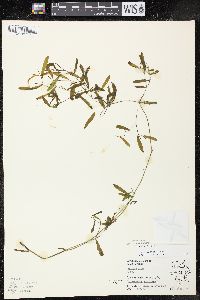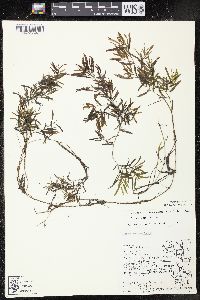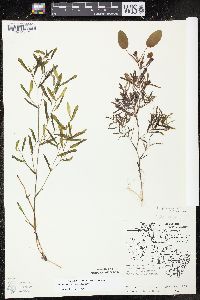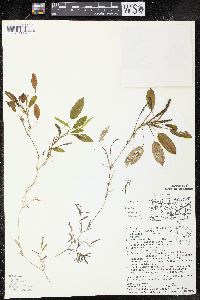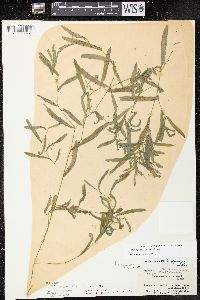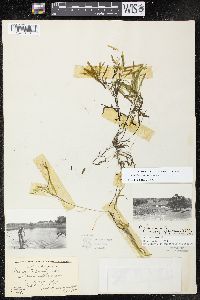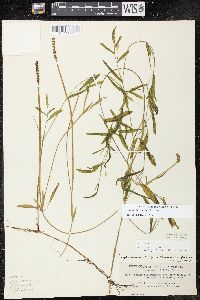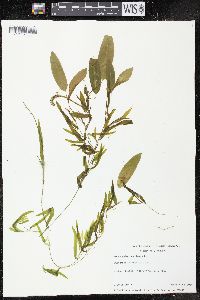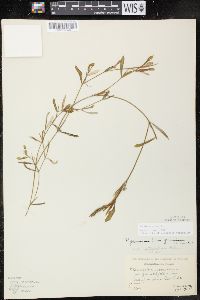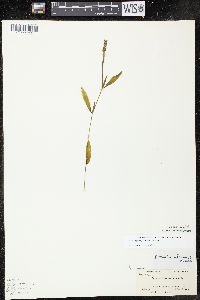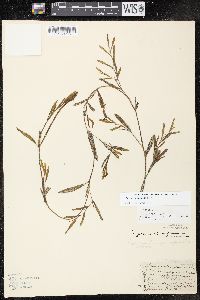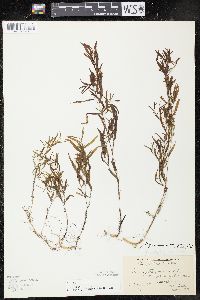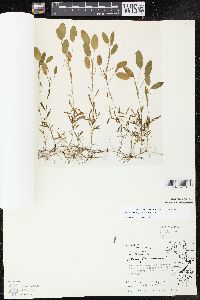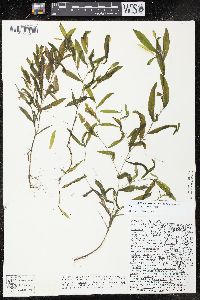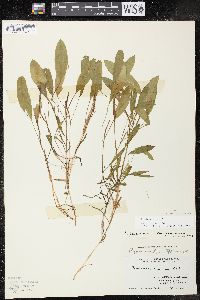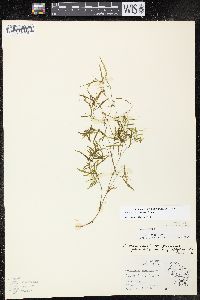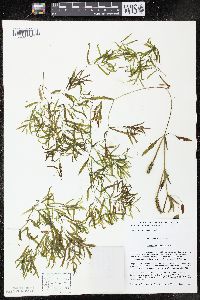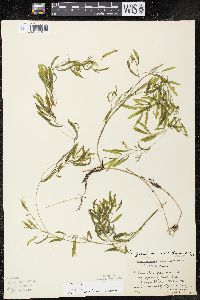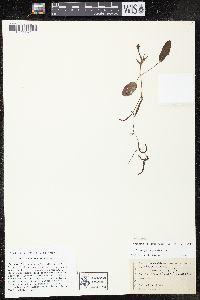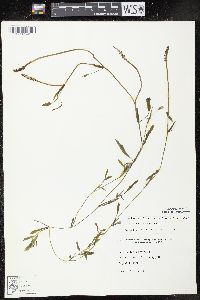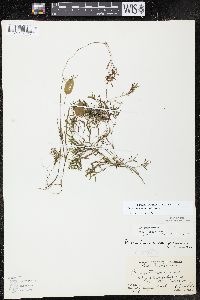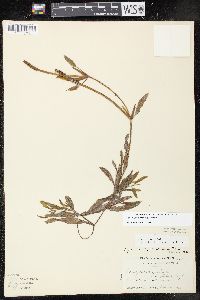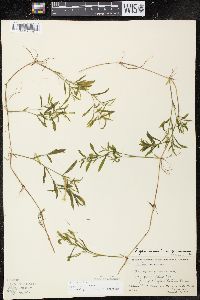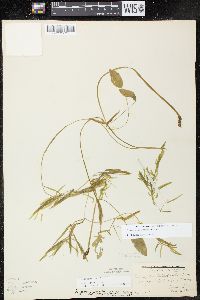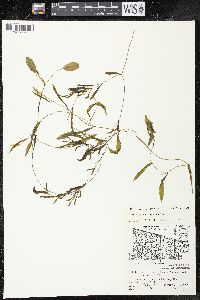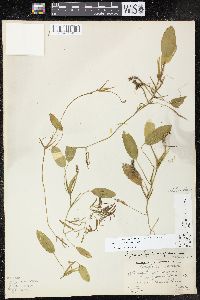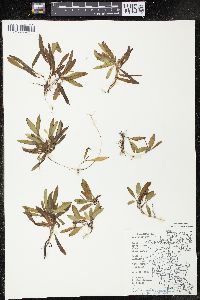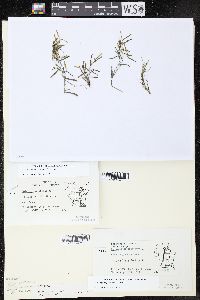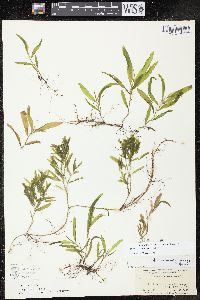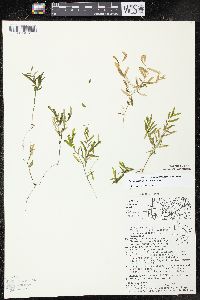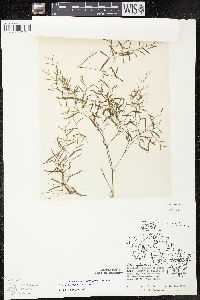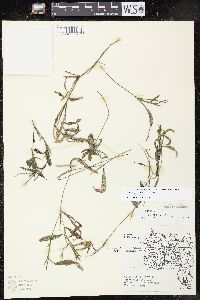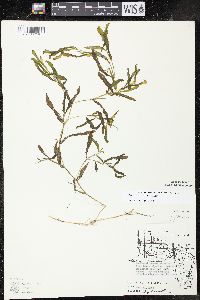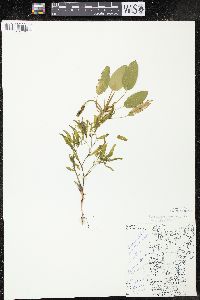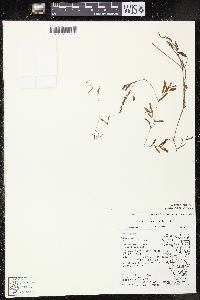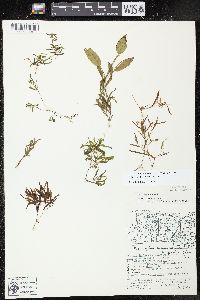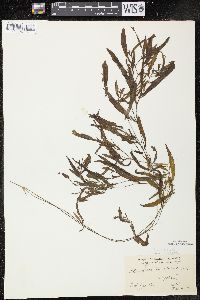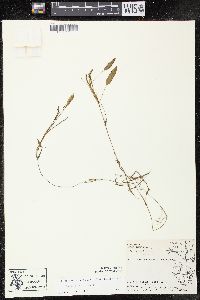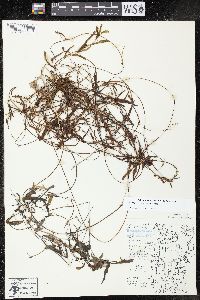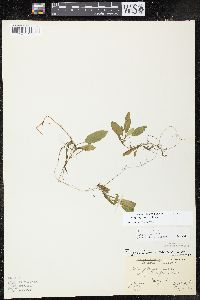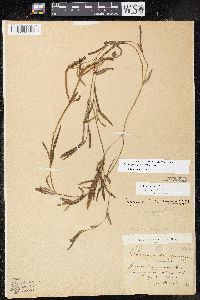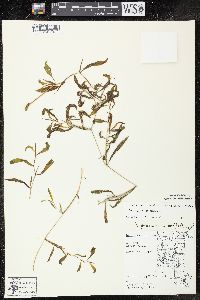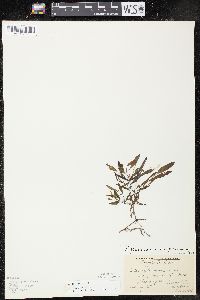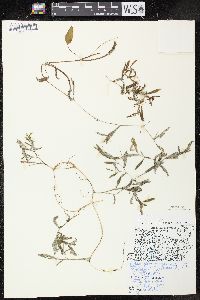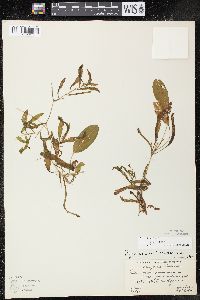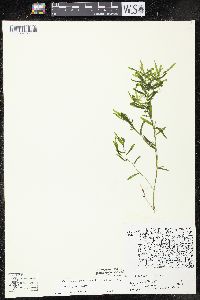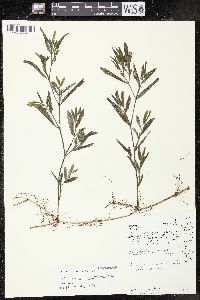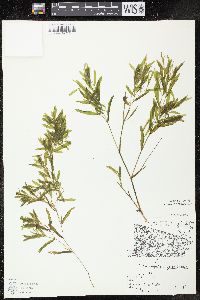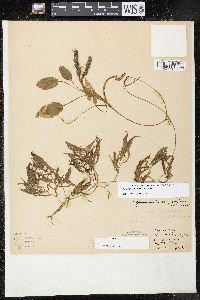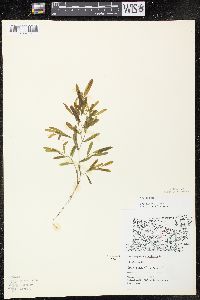
|
|
|
|
Family: Potamogetonaceae
Grassy Pondweed, more...variableleaf pondweed
[Potamogeton delicatulus Bertol., morePotamogeton falcatus Fryer, Potamogeton gramineus f. longipedunculatus (Mérat) House, Potamogeton gramineus f. maximus (Morong) House, Potamogeton gramineus f. myriophyllus (J.W.Robbins) House, Potamogeton gramineus f. terrestris (Schltdl.) D.S.Carp., Potamogeton gramineus subsp. heterophyllus , Potamogeton gramineus var. gramineus , Potamogeton gramineus var. graminifolius Fries, Potamogeton gramineus var. heterophyllus (Schreb.) Fr., Potamogeton gramineus var. maximus Morong, Potamogeton gramineus var. myriophyllus J.W. Robbins, Potamogeton gramineus var. typicus Ogden, Potamogeton heterophyllus f. maximus Morong, Potamogeton heterophyllus f. minimus Morong, Potamogeton heterophyllus f. myriophyllus (J.W.Robbins) Morong, Potamogeton heterophyllus var. graminifolius , Potamogeton oblongifolius Hook.f., Potamogeton x seemenii Asch. & Graebn.] |
Rhizomes present. Cauline stems terete to flattened, without spots, to 150 cm; nodal glands absent. Turions absent. Leaves both submersed and floating or submersed only, ± spirally arranged. Submersed leaves sessile or rarely petiolate, lax; stipules persistent, inconspicuous, convolute, free from blade, pale green to brown, not ligulate, 1.3--1.6 cm, not fibrous, not shredding at tip, apex acute to obtuse; petioles to 3 cm; blade light green to brownish green, elliptic, not arcuate, 3.1--9.1 cm ´ 3--27 mm, base attenuate, without basal lobes, not clasping, margins entire, rarely crispate, apex not hoodlike, acuminate, lacunae in 1--2 rows each side of midvein; veins 3--9. Floating leaves: petioles continuous in color to apex, 3--4.5 cm; blade yellow-green to dark green, elliptic to ovate, 3.5--4 cm ´ 16--20 mm, base rounded, apex acuminate; veins 11--13. Inflorescences emersed, unbranched; peduncles not dimorphic, both axillary and terminal, erect to ascending, cylindric, 3.2--7.7 cm; spikes not dimorphic, cylindric, 15--35 mm. Fruits sessile, greenish brown, ovoid, laterally compressed, abaxially and laterally keeled, 1.9--2.3 ´ 1.8--2 mm, lateral keels without points; beak erect, 0.3--0.5 mm; sides without basal tubercles; embryo with less than 1 full spiral. 2n = 52. Flowering summer--fall. Ponds, lakes, streams, and rivers; 0--3500 m; Greenland; St. Pierre and Miquelon; Alta., B.C., Man., N.B., Nfld. and Labr., N.W.T., N.S., Nunavut, Ont., P.E.I., Que., Sask., Yukon; Alaska, Ariz., Calif., Colo., Conn., Idaho, Ill., Ind., Iowa, Kans., Ky., Maine, Md., Mass., Mich., Minn., Mont., Nebr., Nev., N.H., N.J., N.Y., N.Dak., Ohio, Oreg., Pa., R.I., S.Dak., Utah, Vt., Wash., Wis., Wyo.; Eurasia. Seven hybrids, Potamogeton gramineus ´ P. nodosus (= P. ´ argutulus Hagström), P. gramineus ´ P. richardsonii (= P. hagstroemii A. Bennett [as hagstromii]), P. alpinus ´ P. gramineus (= P. ´ nericius Hagström), P. gramineus ´ P. perfoliatus (= P. ´ nitens Weber [P. ´ subnitens Hagström]), P. gramineus ´ P. natans (= P. ´ sparganiifolius Laestadius ex Fries), P. gramineus ´ P. illinoensis [= P. ´ spathuliformis (J. W. Robbins) Morong)], and P. gramineus ´ P. praelongus (= P. ´ vilnensis Galinis), have been described. Three varieties were recognized (E. C. Ogden 19435) and treated (M. L. Fernald 1950). These varieties, Potamogeton gramineus var. gramineus, deletion}P. gramineus var. myriophyllus, and P. gramineus var. maximus, were said to be separated by the shape and size of the submersed leaves. We have studied many populations of this species in the field and have observed on several occasions that a single population has leaf morphology variable enough to include all three varieties. We have, , therefore , chosen not to recognize any infraspecific categories for this species.
Perennial submersed aquatic herb with rhizomes 30 cm - 1.5 m tall Stem: slender, much-branched, somewhat compressed, jointed. Inflorescence: an upright, dense, cylindrical spike of flowers, emersed, unbranched, 1.5 - 3.5 cm long, on a terminal or axillary stalk. Stalk cylindrical, 3 - 7.5 cm long, thicker than stem. Flowers: greenish, tiny. Stamens four. Anthers two-chambered, with four edge-to-edge sepal-like outgrowths. Fruit: an achene, stalkless, greenish brown, 2 - 2.5 mm long, to 2 mm wide, egg-shaped, laterally compressed, shallowly pitted, keeled, with an upright, 0.3 - 0.5 mm long beak. Dorsal keel sharp, lateral ones obscure. Submersed leaves: more or less arranged spirally, usually stalkless, sometimes on a stalk to 3 cm long, translucent, light green to brownish green, 3 - 9 cm long, 3 mm - 2.5 cm wide, linear to elliptic with a gradually tapering base and pointed to rounded tip (sometimes with a short, tiny point), three- to nine-veined. Stipules axillary, free from leaf blade, green to pale brown, rolled up, about 1.5 cm long. Floating leaves: (if present) more or less arranged spirally, on 3 - 4.5 cm long stalks, yellowish green to dark green, 2 - 4 cm long, 1.5 - 2 cm wide, elliptic to egg-shaped with a rounded or slightly heart-shaped base and pointed tip, eleven- to thirteen-veined, leathery, firmer than submersed leaves. Similar species: Potamogeton illinoensis is often similar but can be distinguished by its higher number of veins on the floating leaves. Also, the tips of the submersed leaves do not exhibit a short, tiny point as P. gramineus sometimes does. Flowering: mid-June to early September Habitat and ecology: Occasional in the shallow areas of lakes. Occurence in the Chicago region: native Notes: This is an extremely variable species. Plants in the genus Potamogeton are very important to wildlife, offering habitat and food for many aquatic animals. Etymology: Potamogeton comes from the Greek words potamos, meaning river, and geiton, meaning neighbor, referring to the habitat of these plants. Gramineus means grass-like. Author: The Morton Arboretum Cronquist et al. 1977, FNA 2000 Duration: Perennial Nativity: Native Lifeform: Forb/Herb General: Partially submerged aquatic with slender and much branched stem, stems terete to flattened to 30-80 cm, arising from slender spreading rhizome Leaves: Both submerged and floating, submersed linear to lanceolate or oblanceolate, 3-9 cm long, 3-10 mm wide, thin and flaccid, apex acute and sharp-pointed base tapering to stem, sessile; floating leaf narrowly to broadly elliptic, 2-5 cm long, 1-2 cm wide, leathery, apex obtuse to mucronate, base cuneate to rounded on long stout petiole. Flowers: Emersed cylindric spike on stout peduncle, 2-10 cm long, with numerous flowers, sessile perfect flowers with perianth of 4 greenish claw-like tepals, 2-3 mm long, short style. Fruits: Sessile achene greenish brown, ovoid and laterally compressed, keeled laterally and below, about 2 mm with erect beak. Ecology: Found slow moving water, ponds, lakes, streams, and marshy sites from 3,000-11,000 ft (914-3353 m); flowers June-August. Notes: Distinguished by having two different kinds of leaves, particularly with the broad elliptic emersed floating or above the water. Ethnobotany: Unknown Etymology: Potamogeton comes from Greek potamos, a river and geiton, for neighbor, while gramineus means resembling grass. Synonyms: Potamogeton gramineus var. graminifolius, P. gramineus var. maximus, P. gramineus var. myriophyllus, P. gramineus var. typicus Editor: SBuckley, 2010 Stems slender, somewhat compressed, much branched, 3-7 dm; submersed lvs sessile, linear or lance-linear to oblanceolate, 3-8 cm נ3-10 mm, acute to cuspidate,
3-7-veined; floating lvs narrowly to broadly elliptic, 2-5 cm, a fourth to half as wide, 11-19-nerved, obtuse to rounded or subcordate at base, the slender petiole often exceeding the blade; stipules axillary, free, 1-3 cm, obtuse; peduncles 2-4(-15) cm, thicker than the stem; spikes dense, cylindric, 1.5-3 cm; frs obovoid, 2-2.5 mm, the sharp dorsal keel and the obscure lateral ones developed chiefly beyond the middle, the sides shallowly pitted; 2n=52. A highly variable circumboreal sp., in Amer. extending s. to N.Y., Io., and Calif. (P. heterophyllus, misapplied) Putative hybrids with various other spp. have been called P. بagstroemii A. Benn., P. سpathulaeformis Morong, P. سubnitens Hagstr., and P. ضarians Morong) Gleason, Henry A. & Cronquist, Arthur J. 1991. Manual of vascular plants of northeastern United States and adjacent Canada. lxxv + 910 pp. ©The New York Botanical Garden. All rights reserved. Used by permission. From Flora of Indiana (1940) by Charles C. Deam Rather frequent in shallow water in our lake area. …… Indiana Coefficient of Conservatism: C = 7 Wetland Indicator Status: OBL |

